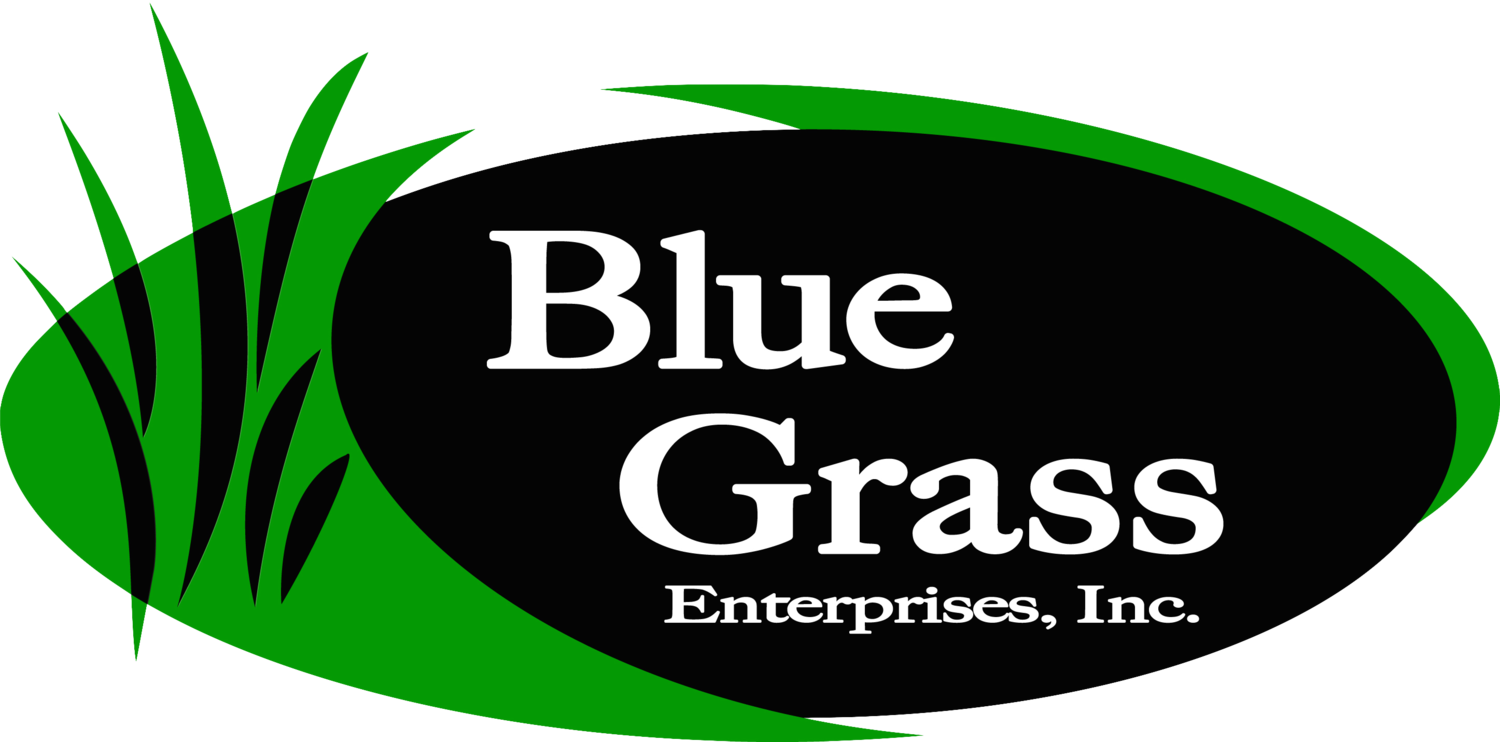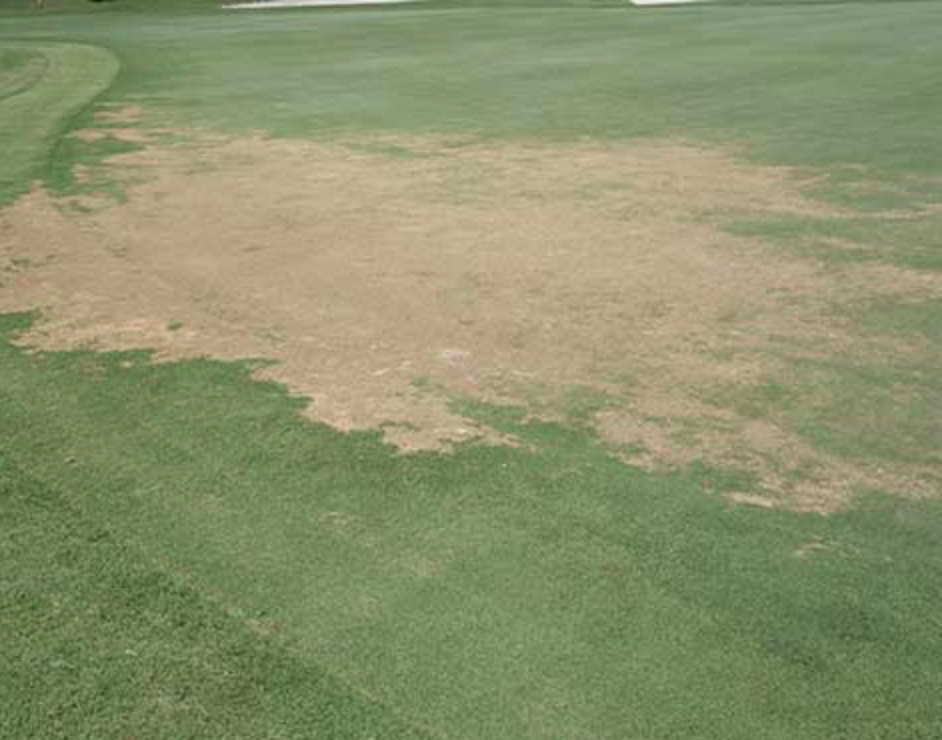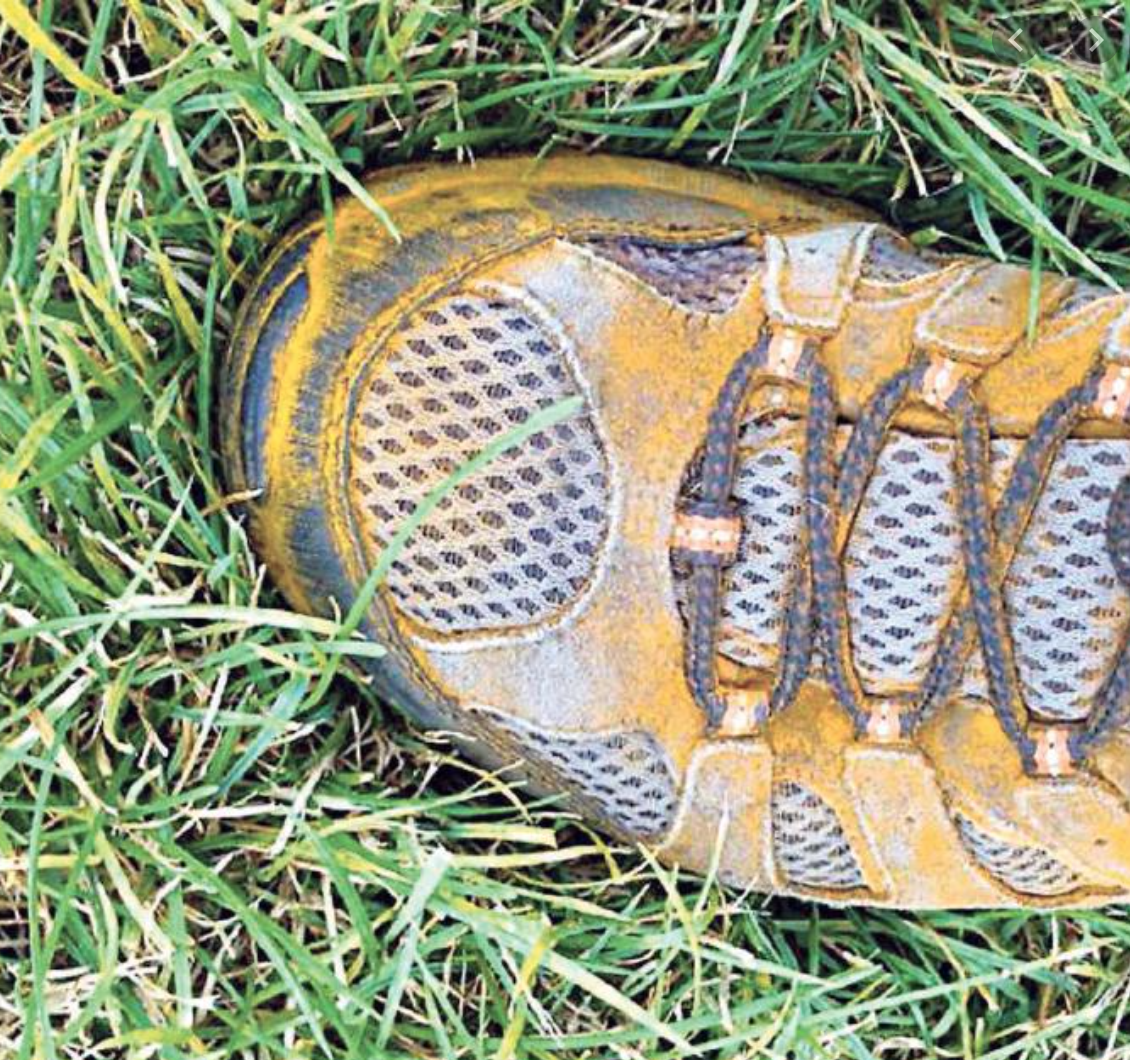The face I make when I see a possible disease in my lawn.
There is a yellow patch in my lawn. Is it a disease!? Is everything dying!?
Let’s start with a reminder that not everything weird in your lawn is a disease.
With the consistently hot and humid weather we have been having, conditions are perfect for diseases to run amuck. However, not all lawn stress or damage is a disease. Sometimes, it can be tricky telling a disease apart from physical damage.
For example, can you tell which of the “diseases” above are diseases and should be treated with a fungicide? SPOILER ALERT: The answer is none of them.
Each of these eight photos is the result of physical damage to the lawn. From left to right the top row is: fertilizer striping, dog damage, compaction, and fertilizer striping. The second row (from left to right) is salt or chemical runoff, malfunctioning irrigation heads, bug spray, and soil compaction.
But what about real diseases!?
I know what you are thinking. You are thinking, Sarah, why on earth are you starting a blog about lawn diseases with a mini-lecture that not everything is a disease?
The short answer is: because science.
The long answer is: It is important to get weird symptoms in your lawn diagnosed before you immediately jump to fungicide use. Unnecessary uses of fungicides will ultimately promote resistant strains of diseases in the same way that taking unnecessary antibiotics promotes stronger bugs in our systems. Think of fungicide use like taking an antibiotic; you really should only use them when you are sick.
This leads me to my first piece of advice when you see something strange on your neighborhood lawns. Don’t panic.
Really look at the area and ask yourself if what you are seeing might be from obvious physical damage, like mowing when it is hot. (Read here for more info on summer care tips.) Do you see any straight lines? That is a giveaway that what you are looking at is definitely not a disease (since Mother Nature doesn’t follow property lines, fences, or straight lines).
Still not sure what you are looking at? Take photos; look at them again in a few days. Is the damage in the exact same spot? That might be a hint something is physically wrong with the space, such as compaction or drought stress, that is not a disease. While there are some exceptions to this statement, most physical issues tend to be easily remedied by 13-13-13 and routine core aerations each year.
Next, consider the weather:
Has it been super hot and dry outside? There is a VERY strong possibility the damage you are seeing might be drought damage or sun scorch, which is a result of the plants burning up from intense heat in the peak of summer. To avoid this, check your irrigation schedule and make sure the lawn is getting 1” of water per week. Again, not a disease… but definitely something that might look like a disease at first blush.
Has it been very hot and muggy? Are people on the news talking about “corn sweat?” If so, we are getting into some more dangerous terrain. So buckle up and enjoy the Summer Lawn Disease show!
HELP! There is definitely a fungus among us!
Check out this very high-quality Venn diagram I just cooked up to illustrate this key point. Three elements must overlap in order for a lawn disease to occur - and good news - several of these factors are in our control with good cultural care practices.
The trifecta of lawn disease pressure. All three elements must be present for a disease outbreak to occur.
Susceptibility: In some ways, this factor is both the easiest and the hardest to control. It is easy to control disease susceptibility if you are making a choice about what species and cultivar genetics you will be caring for - this means if you are taking the time to install a new lawn or athletic field - it pays BIG TIME to understand which cultivars you want to work with.
For example, you probably won’t be surprised to hear that we are VERY picky about what cultivars of Kentucky bluegrass we select, blend, and grow here on our farm - and disease resistance is one of our top priorities when we make these selections.
Not to sound like we are patting ourselves on the back, but if your sod came from our farm, you are setting yourself up for success in a big way for disease control because our cultivars simply aren’t as prone to disease pressure as other cultivars or species of grasses. Having strong genetics doesn’t mean it is impossible for a disease to occur, it simply means you are less likely to experience disease outbreaks.
However, many, many people don’t have the opportunity to select what is growing in their lawn, or you find yourself suffering the consequences of someone else’s poor choices to overseed a high-quality lawn with inferior seed varieties because they simply didn’t know what they were doing. We get it. Life happens.
Long story short, if you are dealing with an older Kentucky bluegrass lawn, or a lawn that has been overseeded with Lord-knows how many mixtures of grasses, or a rye or tall fescue lawn… You might be in for a bumpy ride during hot and humid Iowa summers… But we’re here to help!
Pythium mycelium is easiest to see in the morning when dew is still on the ground. Pro tip? No touchy. Walking through this area or mowing when the mycelium is present will spread the disease quickly!
Pathogen: There are five major ways for a pathogen to spread in lawns. As you read this list, note how many of these pressures are impacted by our behavior in the lawn and can be reduced by modifying maintenance programs and routines.
1. Wind: Wind is a major factor in spreading fungal spores, especially in open lawns where spores can be carried long distances. However, sometimes lack of airflow can be the problem, like in the case of powdery mildew! This is one reason why getting a good ID on the disease is helpful in determining how it spreads and how to reduce its likelihood of recurrence in your lawn in the future.
2. Water: Water, whether from rain, irrigation, or even dew, can splash and spread spores from infected areas to healthy grass. Having too much or too little water will impact pathogen viability. One way to combat many summertime diseases is to adjust your watering program to run less frequently - or turn it off entirely if consistent rains are in the weather forecast - and adjust the watering time to happen overnight, reducing the number of hours during the day the lawn is wet. For information about our best watering recommendations, read here.
3. Foot Traffic and Equipment: People and animals walking through or using lawn equipment in infected areas can pick up spores and carry them to other parts of the lawn. Pythium is a great example of a disease that can be easily spread by people and equipment, dragging mycelium from one place to another, causing significant spread of the disease. If pythium disease is present in your lawn, avoid mowing when the fluffy, white mycelium is present in the early morning, or when the lawn is wet with dew or moisture. This will help reduce the spread of the disease with your mower. Be sure to wash your mower off after coming in contact with the disease to avoid additional spread.
4. Mowing: Dull mower blades tear, rather than cut, grass, creating entry points for pathogens. Let this be your reminder to sharpen your mower blades more than one time in a growing season! Mowing your lawn too short or keeping it too tall can also increase stress on a plant. Read more about our mowing recommendations here.
5. Organic Matter: Thatch buildup, dead leaves, and other organic debris can harbor pathogens and provide a breeding ground for them, increasing the risk of spread. The best way to control this factor is to perform annual core aerations on the lawn - improving drainage and speeding the pace of organic material breakdown in the lawn. As a reminder, thatch is not inherently the enemy in your lawn, it can be very helpful in helping to hold good moisture, protecting biological activity, and holding some nutrients if it is maintained in a healthy way.
Environment: Unfortunately, the weather is a major player in disease presence for all plants. We know, for example, that the phones will start ringing with questions about lawn diseases any time we get into a stretch of hot, humid weather with overnight temperatures consistently over 65 degrees. There’s a reason pythium, summer patch, and necrotic ring spot are called “air conditioner diseases”… they start to spring up around the time of year everyone closes up their windows and kicks on their air conditioners!
However, environment can also refer to nutrient imbalances or feeding practices that simply aren’t helping your property properly. If you are seeing consistent weed pressure in your lawn, we highly recommend doing a soil sample the following early spring (prior to your first feeding of the year) so we can take a close look at what corrections might be done to help reduce and improve environmental pressures that may exist due to malnutrition.
Summer patch
Examples of common summer diseases
Pythium blight
Necrotic Ring Spot
If you are pretty sure you have a disease in your lawn it is important to have it ID’d immediately so an effective treatment program can be implemented.
If you would like to check out three “usual suspects” that might be happening during a hot, humid Iowa summer. Look at these three links:
Summer Patch from Iowa State Turf Department
Pythium blight from Purdue University Turf Department
Necrotic Ring Spot from Purdue University Turf Department
The Iowa State Extension office is also great at ID’ing lawn issues - and our office is always willing to help! To help get an ID quickly, take pictures (both close up and far away) of the area of concern.
If you are working with us, photos can be emailed to info@bgsod.com. Be sure to include your phone number in the email, along with any other information that would be helpful for us to know, such as when the disease appeared, what kind of species of grass you have in your lawn, what side of the house it is active on, what you have done to feed/care for your lawn so far this season, etc.
How to treat summer lawn diseases:
After getting a confirmed ID, make a plan to improve the cultural factors listed above that may be contributing to the problem and make changes to your lawncare program. Much like our bodies, the health of your lawn is the sum of many, many parts that should be observed and approached holistically.
Because fungicides, like antibiotics, kill both the good and the bad fungi in your soils - applying them year after year after year can lead to resistance and imbalances that can cause future issues down the line. It simply isn’t a great strategy to rely on annual fungicide applications to get disease pressures under control.
Bonus Disease: Rust
This is a juvenile disease that should not be treated with a fungicide in most cases. Use 13-13-13 instead!
At Blue Grass, we carry a fungicide product called Headway that treats 23 different diseases using a combination of azoxystrobin and propiconazole. Because this is a combination product, it will control root-rot heavy hitters like dollar spot, pythium, summer patch, and necrotic ring spot, and leaf blight diseases like leaf rust and leaf spot.
How do I apply Headway?
Headway is a granular product that can be spread like any dry fertilizer product. It should only be applied to the affected area (not the entire lawn) prior to rain or irrigation of at least 1/4”.
You’ll find there are two rates listed on the chart on the bag for each disease. The preventative rate (to be applied prior to the outbreak of the disease that is pressuring your lawn) is the smaller (lighter) application number. The curative rate is the larger (heavier) number. These rates are followed by a suggested interval of time for reapplication. These reapplications will be necessary as long as weather conditions remain ideal for your specific disease pressure.
It is important to note that any fungicide application will stunt the growth of a lawn because it inhibits biological processes that help plants to grow. This means the scars in your lawn will take extra long to heal. But there is hope! Many of you will be familiar with our 13-13-13 starter fertilizer. 13-13-13 can be applied at a half or full rate (depending on how hot it is), in between Headway applications to help stimulate new growth and scar repairs. Don’t forget to grab a bag while you are here!
Pro-Tip: Take lots of pictures and make lots of notes of exactly where the disease pressure is in the lawn prior to treatment. You will thank yourself for this step once you get into the preventative process below!
OK. I treated this year. What should I expect for next year?
Some diseases (like pythium) have the ability to “overwinter,” which means they will return the following summer when favorable weather conditions kick back in. This means you will want to plan on preventative applications for a minimum of three growing seasons to ensure the pathogen is completely controlled.
According to Syngenta, a turf manager (aka “you” in this case!) can expect 85%+ control at the preventative rate for each season. This means you should expect there to be a little bit of breakthrough in the lawn in the first and second seasons. But remember that each year the affected area will get smaller and each year, more and more of the disease will be controlled at that preventative rate. With time and consistency, you will control the disease - don’t give up!
Bonus Tip: Mushrooms
As long as we are talking about fungi, we have to mention mushrooms.
Believe it or not, mushrooms are a good thing. They are a sign of healthy bacteria in your lawn breaking down old organic materials like old stumps. Don’t worry about them and don’t spray them. If they are unsightly to you or you fear touching them, simply mow them down. They will come and go on their own as weather conditions evolve each summer. Don’t panic!

















